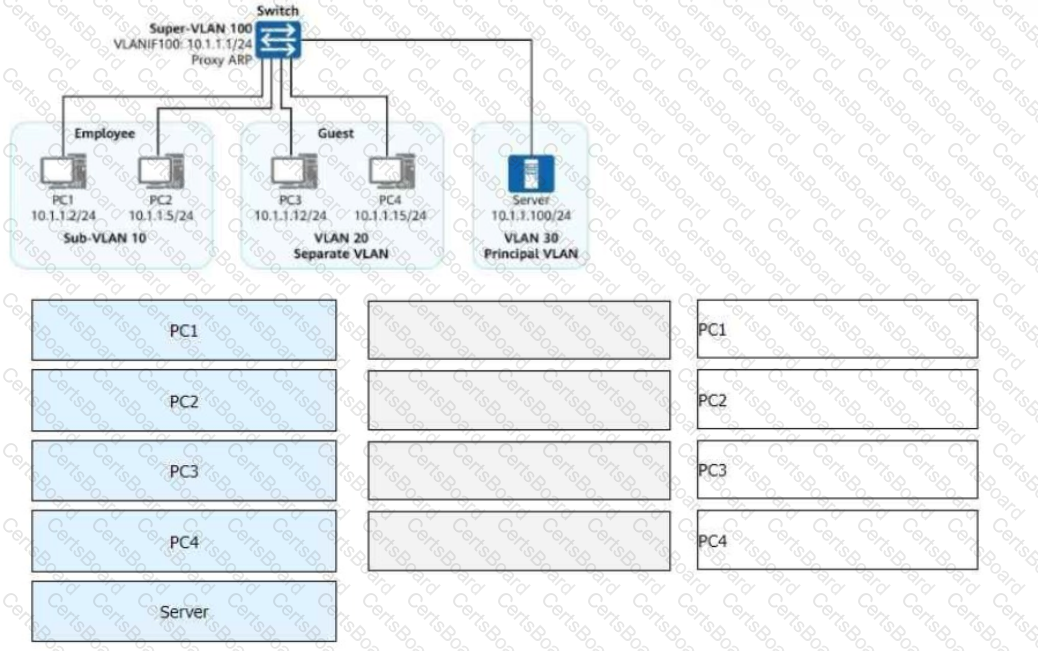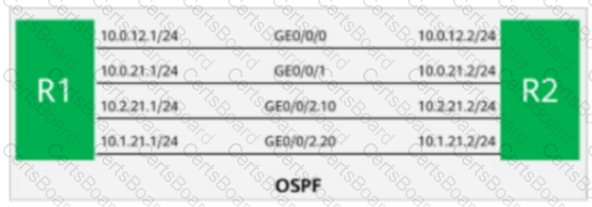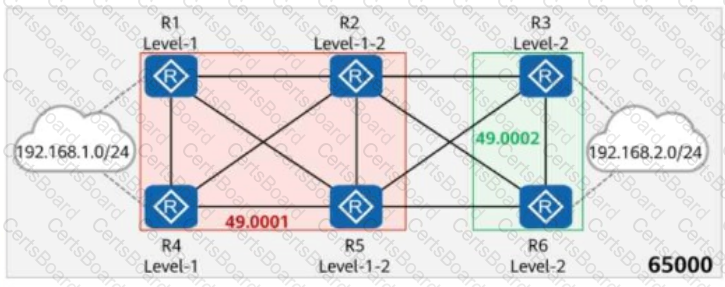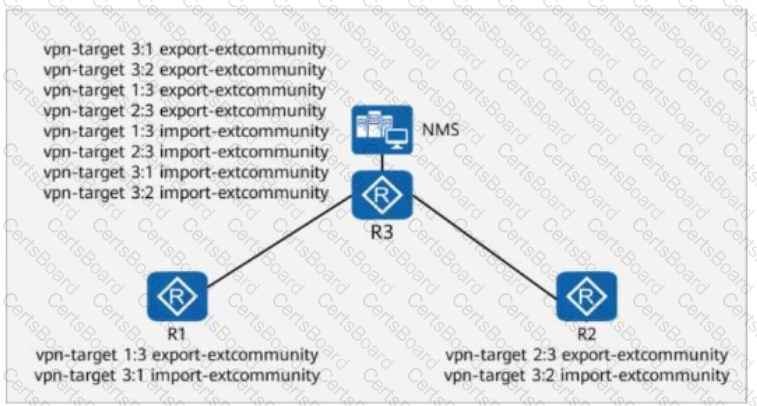OSPF requires that routers in the same area have the same link state database (LSDB). As the number of routes on the network increases, some routers cannot carry so much routing information due to limited system resources. This state is called database overflow. If the Isdb-overflow-limit number 7 command is run on all routers on an OSPF network, which of the following conditions are likely to cause routers to enter the overflow state?
Both VLAN aggregation and MUX VLAN are deployed on the enterprise network shown in the figure.
All switch interfaces connected to terminals are access interfaces.
Given this, match PC1 to PC4 with the hosts or servers they can access on the network.
(Note: A host cannot be matched with itself. For example, PC1 cannot match PC1. Tokens can be reused.)

On a PIM-SM multicast network, a network engineer finds that multicast clients cannot receive multicast data. Which of the following is not a possible cause of this problem?
On a BGP/MPLS IP VPN network, which of the following are carried when a PE advertises VPNv4 routes?
VLAN aggregation is configured on a switched network. Sub-VLAN 2 and Sub-VLAN 3 are added to Super-VLAN 10. To enable hosts in different sub-VLANs to communicate with each other, run the following command in the VLANIF 10 view corresponding to the Super-VLAN.
(Enter lowercase letters.)
On the network shown in the figure, the DHCP server function is enabled on GEO/0/0 of R2, and the address pool is an interface address pool. When GEO/0/0 and GEO/0/1 of R1 function as DHCP clients, only one interface can obtain an IP address by default.

On the OSPF network shown in the figure, R1 and R2 are connected through four links. OSPF is enabled on Loopback0 of R2, and the maximum load-balancing 1 command is run in the OSPF process of R1. Which of the following is the outbound interface from R1 to Loopback0 of R2?

On the network shown in the figure, IS-IS runs on R1, R2, R4, and R5, and the area ID is 49.0001. IS-IS runs on R3 and R6, and the area ID is 49.0002. The import-route isis level-2 into level-1 command is configured on R2.
In AS 65000, R1, R3, R4, and R6 each establish iBGP peer relationships with R2 and R5. R2 and R5 are Route Reflectors (RRs), and R1, R4, R3, and R6 are clients.
An iBGP peer relationship is established between R2 and R5, and the same cluster ID is configured. The iBGP peer relationships are established using Loopback0. The IP address of Loopback0 on each router is 10.0.X.X/32, where X is the router number.
R1 and R4 import the external route 192.168.1.0/24 to BGP through the import-route command, and R3 and R6 import the external route 192.168.2.0/24 to BGP through the import-route command.

Which of the following statements are true?
In the figure, an administrator needs to enable MPLS LDP on R1 to R4. Which of the following configurations of R1 is correct?

On the enterprise network shown in the figure, R3 is connected to the NMS, and all devices on the network communicate with the NMS through a VPN.
During an inspection, it is found that R3 has redundant RTs (Route Targets).
Which of the following commands can be run on R3 to delete the redundant RTs without affecting the connectivity between all devices and the NMS?

Options:


